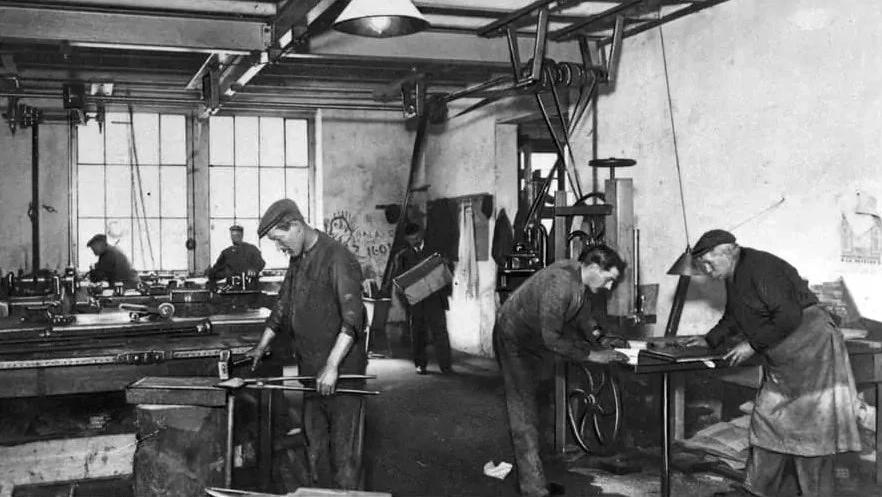
The Origins of the Bleu de Travail
Few garments are as emblematic of French culture as the bleu de travail, the hydrone-dyed work jacket once worn by farmers, machinists, and factory hands. Alongside cousins like le coltin, la blouse, and le bleu de chauffe, it became a timeless uniform of labor.
The bleu de travail emerged in late 19th-century France, at the height of industrialization. Workshops, railways, and factories demanded a new kind of garment: durable, inexpensive, and standardized. Unlike the patched and varied clothes of rural peasants, the bleu was mass-produced, cut from sturdy cotton drill or thick moleskin, and dyed in a deep indigo, Prussian blue or hydrone blue that concealed dirt and wear.

In 1844, Lyon-based tailor Adolphe Lafont sketched what would become the blueprint for modern workwear: the first standardized bleu de travail. It was practical by design. Unlined cotton moleskin jacket with rounded collar without lapels; four or five sturdy buttons; generous pockets held tools and notebooks; a discreet inside pocket for valuables; its boxy cut allowed freedom of movement; its heavy weave resisted sparks and snags. All topstitched for strength, all designed for speed of production.
Factories soon began outfitting their workers directly, giving rise to a new trade of specialized workwear makers. Lafont’s design quickly became the archetype of the bleu. Manufacturers like Le Laboureur, which had begun by selling agricultural clothing at fairs and markets in Burgundy, expanded to producing durable workwear for the building trades, using high-quality fabrics and construction. Worn by metalworkers, farmers, and railway staff for over a century, cemented the jacket as both the unspoken uniform and the shared identity of the French working class.

But the bleu de travail wasn’t always blue. In its earliest forms, it was black or grey—the cheap, serviceable shades of coal dust and soot. Blue had long been too precious, its pigments scraped from plants, mined from stone, or imported as costly indigo from Asia. For centuries, it belonged to royalty and saints, not stonemasons and machinists.
That changed in 1704, when Berlin chemist Johann Jacob Diesbach, running out of ingredients for his red pigment, accepted a substitute from his colleague Dippel. The result wasn’t red at all, but a dense, electric blue: Prussian Blue. Within decades, this synthetic dye spread across Europe. For the first time, blue was reproducible and affordable.
By the 19th century, uniforms everywhere turned blue—soldiers, sailors, police, fire brigades—and soon, the swelling industrial workforce. Factories filled with the same shade that once draped kings. Out of this transformation, the first true bleu de travail was born.
At the dawn of the 20th century, chemistry advanced again. A new synthetic, hydrone blue, proved cheaper, stronger, and far more resistant to sun, sweat, and bleach. By 1900, it had become the defining color of labor—the shade of those who built, repaired, and carried France into the modern age.

By the mid-20th century, the bleu began to slip beyond the factory floor. Factories modernized, labor laws improved, and social boundaries softened. Artists and sculptors adopted the jacket. Students of May ’68 wore it in solidarity with workers. In the 1970s, designers and photographers discovered a quiet poetry in its simplicity. Bill Cunningham, the legendary New York fashion photographer, famously made it his daily uniform, picked up in the basement of the BHV in Paris.

From there, its journey into the wider world of fashion accelerated. Vintage markets in Europe and Japan exported the style globally. Fashion houses borrowed its silhouette. What had been a badge of labor became a badge of understated cool.
